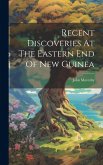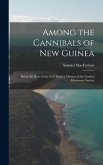New Guinea, the world's largest tropical island, is a land of great contrasts, ranging from small glaciers on its highest peaks to broad mangrove swamps in its lowlands and hundreds of smaller islands and coral atolls along its coasts. Divided between two nations, the island and its neighboring archipelagos form Indonesia's Papua Province (or Irian Jaya) and the independent nation of Papua New Guinea, both former European colonies. Most books on New Guinea have been guided by these and other divisions, separating east from west, prehistoric from historic, precontact from postcontact, colonial from postcolonial. This is the first work to consider New Guinea and its 40,000-year history in its entirety. The volume opens with a look at the Melanesian region-the basic physical geography and prehistoric periods of settlement, agricultural development, and expansion and the nature of trade networks and population movements. Succeeding chapters review the history of encounters between outsiders and New Guinea's populations. The impact of colonial rule, economic and social change, World War II, decolonization, and independence are discussed in the final chapter.
Hinweis: Dieser Artikel kann nur an eine deutsche Lieferadresse ausgeliefert werden.
Hinweis: Dieser Artikel kann nur an eine deutsche Lieferadresse ausgeliefert werden.








